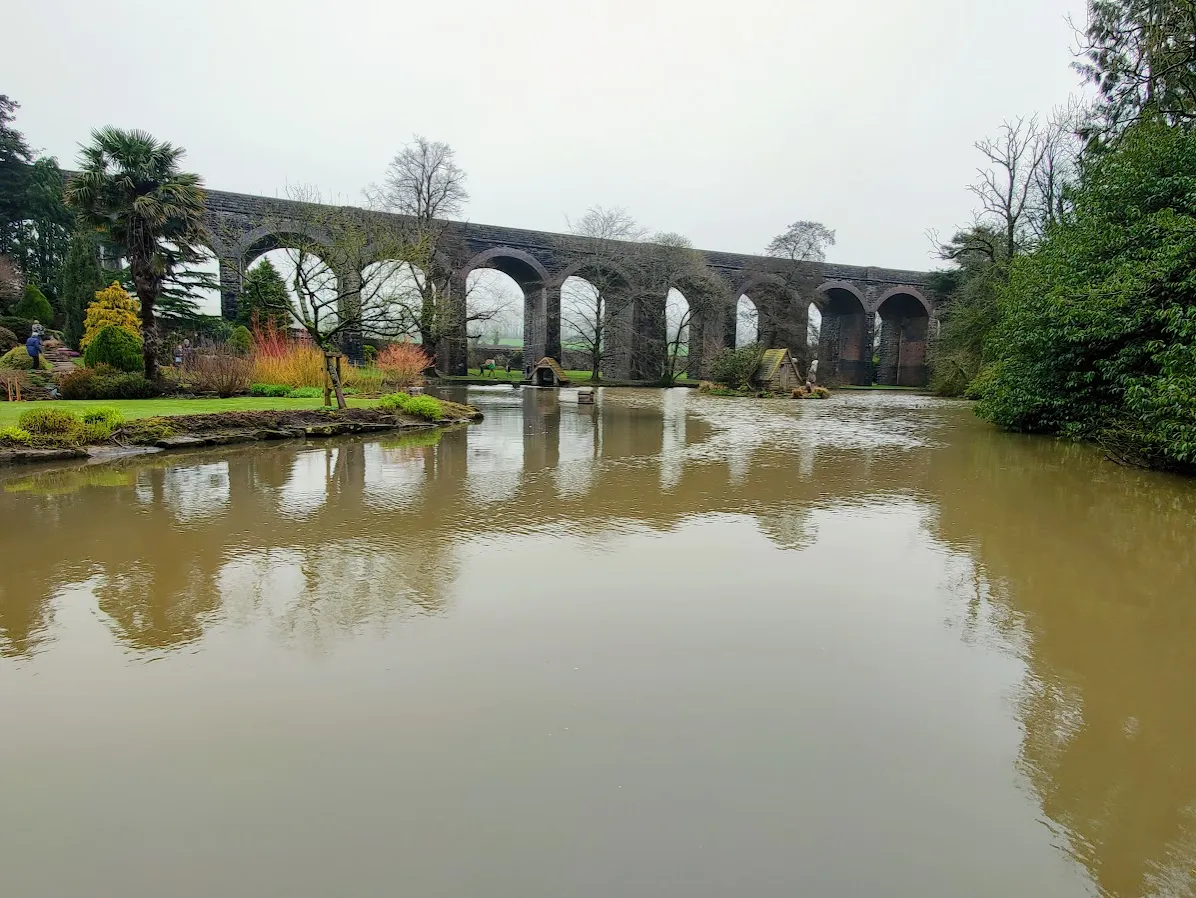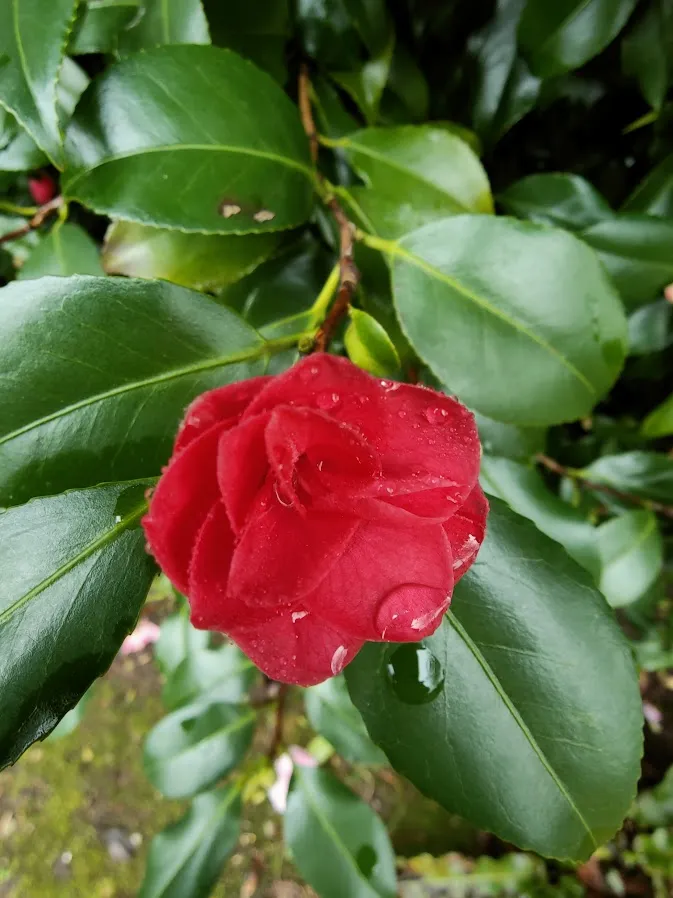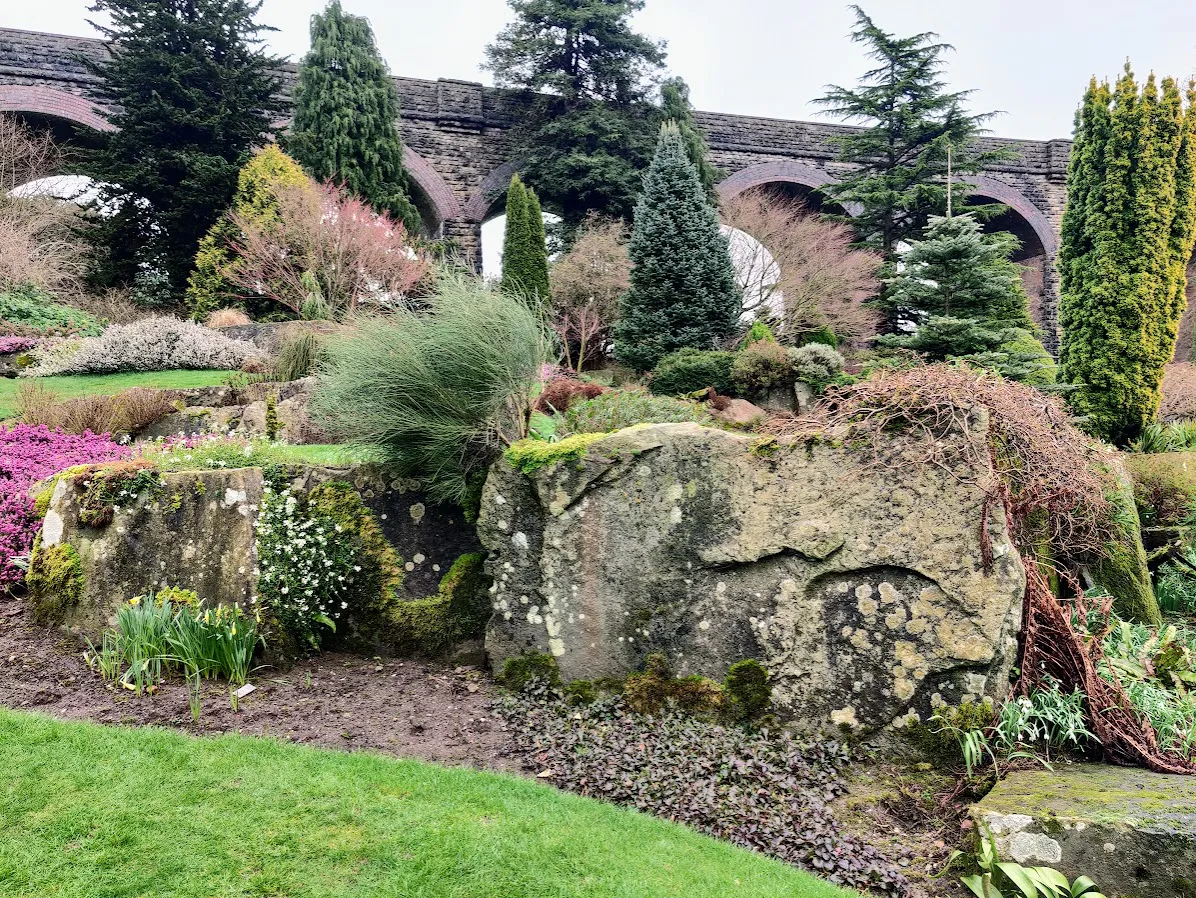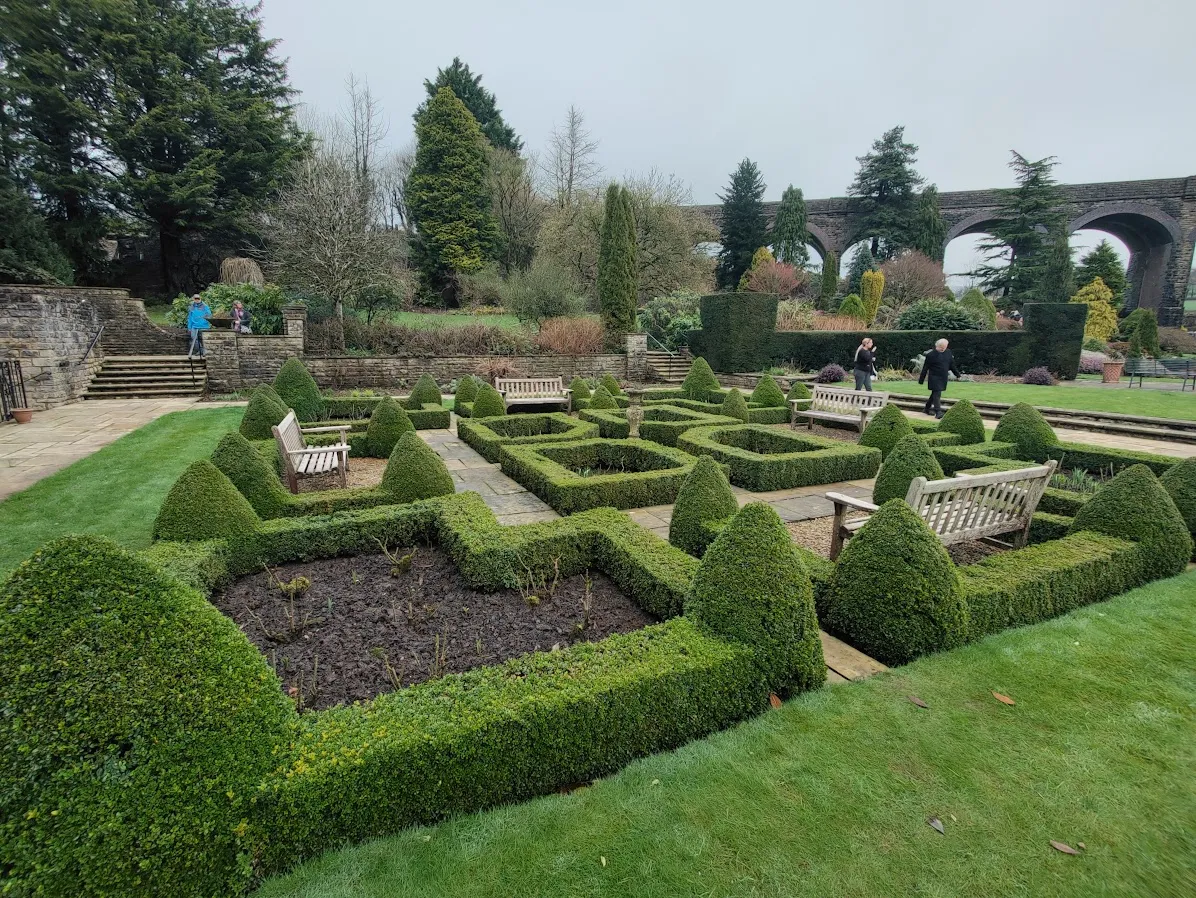On Sunday we visited Kilver Court Gardens in Shepton Mallet, looking for snowbells. Whilst there were a few, the beauty of the garden for me was more than tiny nodding white flowers, but in the backdrop of an aquaduct that created a kind of microclimate and the wonder of a British garden, so wet next to the gardens of the dry Antipodes that I'm used to.

It had rained so much the night before that the ducks were rejoicing, laughing their qu qua quaack, and everything underground seemed to rush along as a river, the mosses waving to the sky with dewdrop tips, the worms drunk. In the centre of the gardens was a huge pond.
History


How foreign these gardens are to me, with their camellias and twisted willows, firs and mosses. As my sister and mother in law pointed and named this small world, I thought of my banksia and grevilleas, correas and silky oaks. Here, one of my favourites was a twisted willow, the likes of which I'd never seen, something elvin, otherworldly.




Raindrops sat on camellias. I was entraptured for a while by a fir tree, the alien spikes the leftovers from something's meal as they munched the cone that stood as a candle on a christmas tree. Three stages - the full fruit, the eaten spikes, the tiny buds.



Daffodils are out early they say this year. They are one of the many oh so English things I have forgotten, in my absence. Another in a robin, hiding close in a spiked tree we can't identify. There is a maze, too. What a delight it must have been to work here. Imagine if every factory employer created such a garden for it's employees!



And again, the aquaduct. I love these feats of engineering. They used to make things beautiful as well as functional. Look at the bricks around the arch! And I loved to see the willow fencing as well.




The crocuses are out, the primroses, the hyacinths. All over the country there are pots bursting with bulbs ready to flower in colour. After the long winter, life is bursting at the seams, and the people visiting gardens and walking in the countryside ooh and ahh like it is fireworks.


I hope you enjoyed this walk around the gardens!
With Love,

Are you on HIVE yet? Earn for writing! Referral link for FREE account here
